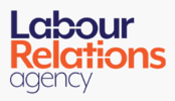Pregnancy at work
Health and safety of pregnant workers
You have a legal duty to protect the health and safety of pregnant mothers at work. This includes workers who could be pregnant as well as those who you know are pregnant.
Workplace risk assessment
Some substances, processes, and working conditions may affect human fertility as well as pose a risk to a pregnant worker and/or her unborn child. Therefore, you must think about the health of women of childbearing age, not just those who have told you that they are pregnant.
If you employ women of childbearing age, you should, as part of your normal risk assessment, consider if any work is likely to present a particular risk to them - whether or not they might be pregnant.
As part of your legal duty to take measures to protect your workers, all employers must undertake a workplace risk assessment for their pregnant employees. For further information see risk assessment for pregnant workers and new mothers - employer guidance from the Health and Safety Executive NI (HSENI).
Notification from a pregnant worker
You should also encourage workers, eg via your fertility policy, pregnancy at work, maternity policy or staff handbook, to notify you as soon as possible if they become pregnant. This is so you can identify if any further action is needed.
You are entitled to ask a pregnant worker to provide:
- notification of her pregnancy in writing
- a certificate from a registered medical practitioner or a registered midwife showing that she is pregnant
Note that you do not have to:
- begin to take any action in relation to a particular pregnant worker's health and safety until she gives you written notification
- maintain any action in relation to her where she has failed to give you the certificate within a reasonable period of time - although you must have requested in writing to see the certificate
However, even if a pregnant worker has not formally notified you of her pregnancy, it is good practice to do a risk assessment for her if you become aware that she is pregnant.
Once a worker notifies you that she is pregnant, you should review the risk assessment for her specific work and identify any changes that are necessary to protect her health and that of her unborn baby. Involve the worker in the process and review the assessment as her pregnancy progresses to see if any further adjustments are needed.
For more information on health and safety risk assessments, see health and safety risk assessment.
Pre-maternity leave meeting
It is good practice for an employer to hold a pre-maternity leave meeting with an employee to discuss and agree issues such as:
- handover and cover for her work during maternity leave
- keeping in touch days (including the employee's preferred contact details and method)
- receiving work related information
- employees right to shared parental leave
- annual leave
Potential hazards for pregnant workers
Things that might be hazardous to female employees - and pregnant workers in particular - include:
- mental and physical fatigue caused by long working hours
- night-time working
- work-related stress
- skin protection from sun exposure when working outdoors
- excessive noise
- extremes of cold and heat
- threat of violence in the workplace
- exposure to harmful substances, eg lead, radioactive materials, toxic chemicals like mercury and pesticides, infectious diseases, carbon monoxide, and antimitotic (cytotoxic) drugs
- exposure to radiation
- lifting/carrying heavy loads
- working at heights
- exposure to infectious diseases
- sitting or standing still for long periods of time
- unhealthy workstations or posture
- lone working
- exposure to vibration
If you identify a risk that could cause harm to your worker or their child, you must decide if you can control it. If you cannot control or remove the risk, you must do the following: eg adjust working conditions or working hours to avoid the risk or offer her suitable alternative work.
If this isn't possible, you must suspend the worker on paid leave for as long as necessary to protect their health and safety and that of their child.
Managing the health and safety of pregnant workers and new mothers - HSENI employer guidance.
Rest facilities for pregnant and breastfeeding mothers
You're required by law to provide somewhere for pregnant and breastfeeding mothers to rest.
Pregnant workers and breastfeeding mothers are entitled to more frequent rest breaks. You should talk to them so you can agree on the timing and frequency.
You are legally required to provide a suitable area where employees can rest, including somewhere to lie down if necessary. You must provide a private, hygienic, and safe room for nursing mothers to express milk if they choose to and somewhere to store breast milk, eg a fridge. Toilet facilities are not a suitable or hygienic place for this purpose.
- LRA Workplace Information Service03300 555 300
